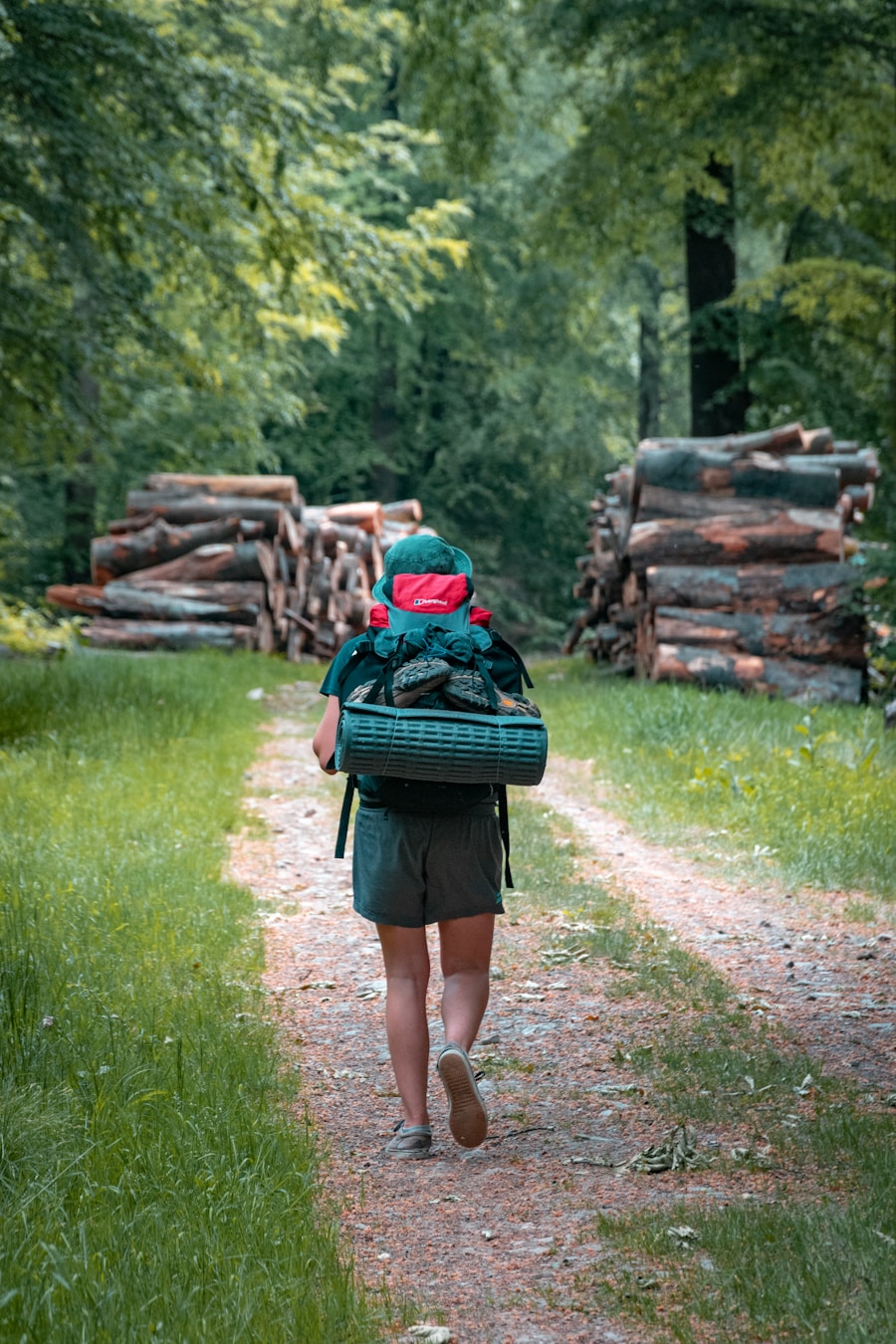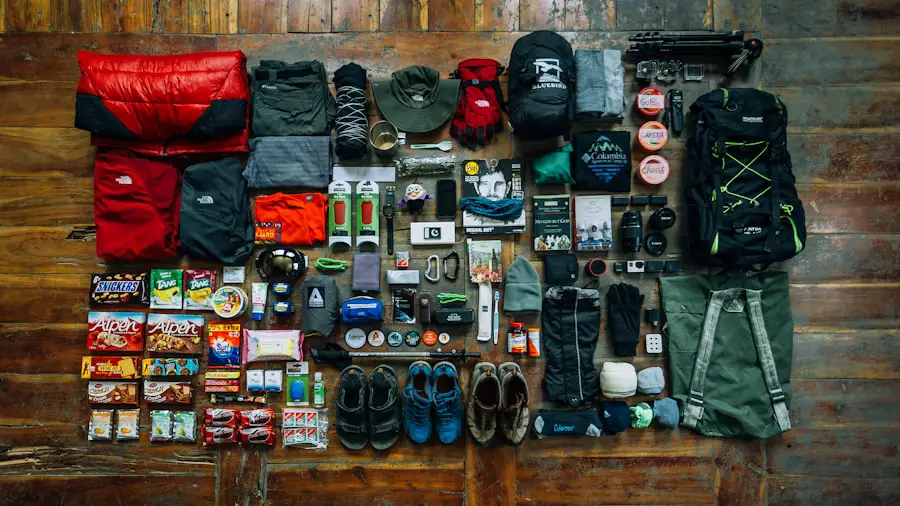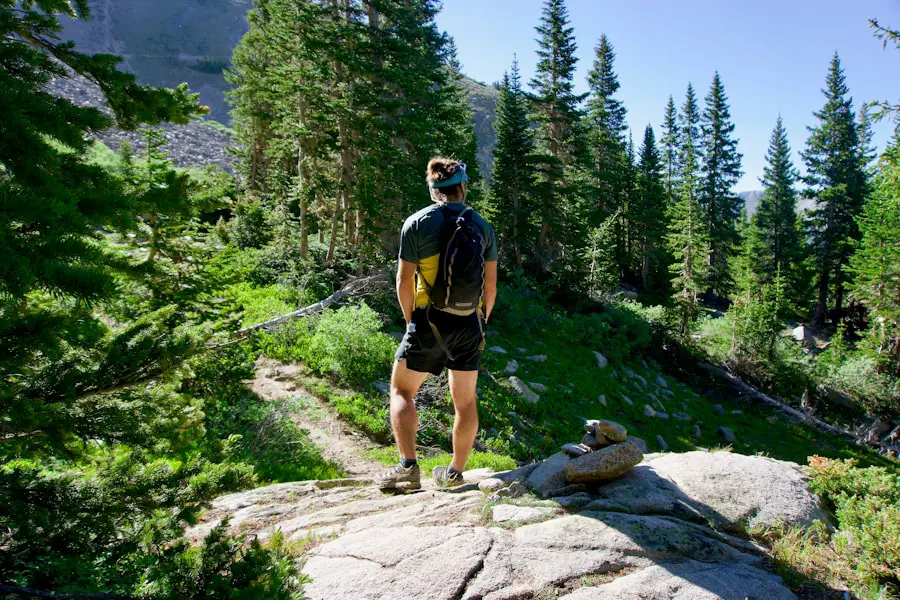When embarking on an outdoor adventure, the right clothing and footwear are paramount to ensuring comfort and safety. The choice of clothing should be dictated by the environment and weather conditions one expects to encounter. Layering is a fundamental principle in outdoor attire, allowing for flexibility in response to changing temperatures.
A moisture-wicking base layer is essential for managing sweat and keeping the skin dry, while an insulating mid-layer, such as fleece or down, provides warmth. The outer layer, typically a waterproof and windproof shell, protects against the elements. For instance, a hiker traversing a mountainous region may opt for a lightweight, breathable jacket that can withstand rain and wind, while also being packable for easy storage when not in use.
Footwear is equally critical, as the right shoes or boots can make or break an outdoor experience. Hiking boots should offer adequate ankle support, traction, and durability to handle rugged terrain. For example, a pair of waterproof hiking boots with Vibram soles can provide both grip and protection against wet conditions.
Additionally, the choice of socks is often overlooked; moisture-wicking and cushioned socks can prevent blisters and enhance comfort during long treks. In colder climates, insulated boots may be necessary to keep feet warm and dry, while in warmer regions, breathable trail runners can offer comfort without overheating. Ultimately, the right clothing and footwear not only enhance performance but also contribute significantly to the overall enjoyment of outdoor activities.
Key Takeaways
- Choose clothing and footwear suitable for the weather and terrain of your hiking destination
- Invest in a quality, lightweight shelter and sleeping gear for a comfortable night’s rest
- Carry navigation tools and communication devices for safety and convenience
- Pack a first aid kit and personal care items for emergencies and hygiene
- Bring food and cooking supplies for sustenance, and consider lightweight, high-energy options
Shelter and Sleeping Gear
The selection of shelter and sleeping gear is crucial for ensuring a good night’s rest while camping or hiking. A reliable tent serves as the primary shelter, providing protection from the elements and insects. When choosing a tent, factors such as size, weight, and ease of setup should be considered.
For instance, a two-person tent that weighs under four pounds is ideal for backpackers who need to minimize weight without sacrificing space. Additionally, features like waterproof rainflys and durable materials can enhance the tent’s longevity and performance in adverse weather conditions. Sleeping gear encompasses sleeping bags and sleeping pads, both of which play vital roles in ensuring comfort during rest periods.
A sleeping bag rated for the appropriate temperature range is essential; for example, a three-season sleeping bag is suitable for spring through fall camping, while winter excursions may require a bag rated for sub-zero temperatures. Sleeping pads provide insulation from the cold ground and cushioning for a more comfortable sleep experience. Inflatable pads are popular among backpackers due to their lightweight nature, while foam pads offer durability and ease of use.
Together, these elements create a cozy sleeping environment that can significantly impact one’s energy levels and overall enjoyment of outdoor activities.
Navigation and Communication

In the wilderness, effective navigation and communication tools are indispensable for safety and orientation. Traditional maps and compasses remain vital resources for outdoor enthusiasts who venture into remote areas where GPS signals may falter. A topographic map provides detailed information about terrain features, elevation changes, and water sources, allowing hikers to plan their routes effectively.
Coupled with a compass, these tools enable users to navigate confidently through unfamiliar landscapes. For instance, understanding how to read contour lines on a map can help hikers anticipate steep climbs or descents. In addition to traditional navigation methods, modern technology has introduced various electronic devices that enhance communication and navigation capabilities.
GPS devices and smartphone applications can provide real-time location tracking and route planning features. However, reliance on technology should be tempered with caution; battery life can be a limiting factor in remote areas. Therefore, carrying a portable solar charger or extra batteries can ensure that devices remain operational throughout the journey.
Furthermore, satellite communication devices offer an additional layer of safety by allowing users to send distress signals or communicate with loved ones even in areas without cellular coverage. This combination of traditional and modern navigation tools equips adventurers with the means to explore confidently while remaining connected.
First Aid Kit and Personal Care Items
| Item | Quantity | Expiration Date |
|---|---|---|
| Band-Aids | 50 | 2023-06-15 |
| Gauze Pads | 20 | 2024-03-20 |
| Antiseptic Wipes | 30 | 2023-12-10 |
| Tweezers | 1 | N/A |
| Scissors | 1 | N/A |
| Hand Sanitizer | 3 | 2023-09-25 |
A well-stocked first aid kit is an essential component of any outdoor excursion, as it prepares adventurers for potential injuries or health issues that may arise in remote settings. The contents of a first aid kit should include adhesive bandages in various sizes for minor cuts and scrapes, antiseptic wipes for cleaning wounds, gauze pads for larger injuries, and medical tape for securing dressings. Additionally, including items such as tweezers for splinter removal and scissors for cutting tape or clothing can prove invaluable in emergencies.
For instance, a hiker who sustains a blister on a long trek will benefit from having blister pads readily available to alleviate discomfort. Personal care items also play a significant role in maintaining hygiene and comfort during outdoor activities. Sunscreen is crucial for protecting skin from harmful UV rays, especially at higher altitudes where exposure increases.
Insect repellent is equally important in areas prone to mosquitoes or ticks, which can carry diseases such as Lyme disease or West Nile virus. Furthermore, biodegradable soap can help maintain cleanliness without harming the environment when washing up near natural water sources. Carrying items like lip balm with SPF protection and moisturizing lotion can also enhance comfort during extended trips in harsh weather conditions.
Together, these first aid supplies and personal care items contribute to a safer and more enjoyable outdoor experience.
Food and Cooking Supplies
Proper nutrition is vital during outdoor adventures to maintain energy levels and overall well-being. Planning meals ahead of time ensures that adventurers have access to balanced diets while minimizing food waste. Lightweight, non-perishable foods such as dehydrated meals, energy bars, nuts, and dried fruits are popular choices among backpackers due to their convenience and high caloric content.
For example, freeze-dried meals require only hot water to prepare, making them an efficient option for cooking on the trail. Cooking supplies are equally important for preparing meals safely and efficiently in the outdoors. A portable camp stove is often preferred over traditional campfires due to its ease of use and reduced environmental impact.
When selecting a stove, factors such as fuel type (propane or butane) and weight should be considered based on the length of the trip and group size. Additionally, cookware such as lightweight pots or pans made from aluminum or titanium can facilitate meal preparation without adding excessive weight to a backpack. Utensils like sporks or multi-tools combine functionality with space-saving design, allowing adventurers to enjoy their meals without carrying bulky items.
By carefully selecting food options and cooking supplies, outdoor enthusiasts can ensure they remain nourished throughout their journey.
Safety and Emergency Equipment

Safety equipment is paramount when venturing into the wilderness, as it prepares individuals for unforeseen circumstances that may arise during their adventures. A whistle is an essential item that can be used to signal for help if someone becomes lost or injured; its sound carries much farther than a human voice. Additionally, headlamps or flashlights equipped with extra batteries are crucial for navigating in low-light conditions or during nighttime emergencies.
For instance, if a hiker finds themselves stranded after dark due to an unexpected delay, having reliable lighting can make all the difference in safely finding their way back. Emergency equipment also includes items such as fire-starting tools—matches or lighters—and emergency blankets that provide warmth in survival situations. A multi-tool can serve various purposes from cutting rope to opening cans, making it an invaluable addition to any safety kit.
Furthermore, carrying a signaling mirror or reflective emergency blanket can aid in attracting attention from rescuers if needed. In remote areas where help may not be readily available, these safety measures become critical components of an outdoor enthusiast’s gear list.
Backpack and Daypack Essentials
The choice of backpack is fundamental to any outdoor adventure; it must be comfortable while providing adequate storage for all necessary gear. When selecting a backpack, factors such as capacity (measured in liters), fit (torso length), and features (like hydration reservoirs) should be considered based on the trip’s duration and type of activities planned. For example, a daypack with a capacity of 20-30 liters is ideal for short hikes where minimal gear is required, while multi-day backpacks typically range from 50-70 liters to accommodate additional supplies.
Inside the backpack, organization is key to ensuring easy access to essential items during hikes or camping trips. Packing cubes or stuff sacks can help separate clothing from cooking supplies or first aid kits, making it easier to locate specific items quickly. Hydration systems—such as water bottles or bladders—should be easily accessible to encourage regular hydration throughout the day.
Additionally, including lightweight rain covers for backpacks can protect gear from unexpected downpours while on the trail. By carefully selecting backpacks and organizing their contents effectively, outdoor enthusiasts can enhance their overall experience by ensuring that everything they need is within reach.
Miscellaneous Items
Beyond the core essentials of clothing, shelter, navigation tools, first aid kits, food supplies, safety equipment, and backpacks lies a range of miscellaneous items that can enhance an outdoor experience significantly. These items may include personal comforts such as travel pillows or compact hammocks that provide relaxation opportunities during downtime at campsites. A portable phone charger can ensure that electronic devices remain powered throughout the trip for navigation or communication purposes.
Additionally, tools like trekking poles can provide stability on uneven terrain while reducing strain on joints during long hikes; they are particularly beneficial when traversing steep inclines or declines. A lightweight tarp can serve multiple purposes: as an additional shelter from rain or sun or as a ground cover for sitting around campfires without getting dirty. Furthermore, including entertainment options like playing cards or books can help pass time during evenings at camp when darkness falls early in remote areas.
These miscellaneous items may seem trivial at first glance but can significantly contribute to comfort and enjoyment during outdoor adventures when thoughtfully included in gear lists.
When preparing for a hiking trip, it’s important to consider not only what to pack but also what tools and gadgets can enhance your experience. One essential item to bring along is a reliable power bank to keep your devices charged while on the go. TakeTravelInfo has a great article on the best power banks for international travel that can help you stay connected even in remote locations. Having a portable camping stove is another must-have for outdoor adventures, and TakeTravelInfo also offers a list of the top options for your spring 2025 trips. Additionally, a portable WiFi hotspot can be a game-changer for staying connected while traveling abroad. Check out TakeTravelInfo’s article on the best portable WiFi hotspots for international travel to ensure you have reliable internet access wherever your hiking journey takes you. Source
Love travel? Join Our Facebook Community For More Tips.
FAQs
What should I pack for a hiking trip?
When packing for a hiking trip, it’s important to bring essential items such as a map, compass, first aid kit, water, food, appropriate clothing, and a backpack to carry everything.
What type of clothing should I pack for a hiking trip?
It’s important to pack moisture-wicking and breathable clothing for a hiking trip. This includes a moisture-wicking base layer, insulating layer, and a waterproof and windproof outer layer. Additionally, it’s important to pack extra socks and sturdy hiking boots.
What kind of food and water should I bring on a hiking trip?
For food, it’s best to pack lightweight, high-energy snacks such as trail mix, energy bars, and dried fruits. For water, it’s important to bring an adequate supply and consider using a hydration system or water bottles.
What safety items should I pack for a hiking trip?
Safety items to pack for a hiking trip include a first aid kit, emergency whistle, multi-tool, headlamp or flashlight, and a map and compass. It’s also important to bring a fully charged cell phone and a portable charger.
What other essential items should I pack for a hiking trip?
Other essential items to pack for a hiking trip include sunscreen, insect repellent, a hat, sunglasses, a lightweight and packable rain jacket, and a small towel. It’s also important to pack any necessary permits or passes for the hiking area.
